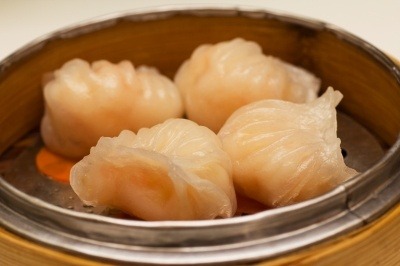
♦ Explore the world of dumplings !
Dumplings are food products that are enjoyed all over the world. They may be eaten in their own right or form an important accompaniment to other foods. Generally, they are produced as a piece of thin dough of wheat or semolina flour with the possible addition of egg or oil to enrich the mixture. They are often filled with a variety of stuffings based on meat or other savoury fillings, or fruit filled to add to the variety.
Dumplings generally must be prepared before consumption and then either cooked, fried, roasted or just warmed up. Whilst recipes for dumplings are similar the world over there are a great many variants on a theme and often characteristic of the country in which they are most often produced. The stuffing generally signifies the country of origin !
Having produced a variety of dumplings over many years as part of product development, they have all been half-moon shaped and range in weight from 13 to 28 g. The dough usually forms 80% to 90% of the dumpling weight with the remainder being stuffing.
In Eastern Europe such as the Ukraine, Belarus, Lithuania and Russia we find pielmienie, czebureki, cepeliny, kibiny, kołduny, amongst others. The Italians produce filled pastas which are forms of dumpling such as ravioli and tortellini, whilst the Germans produce Maultaschen which are filled with white cheese, meat, or vegetables. Great Britain and Ireland have their savoury dumplings which are just simple balls of dough for cooking in stews and goulashes. The Brazilians produce pastels, coxinhas, and bolinhas de carne which are fried dumplings filled with chicken, pork, or beef mixed with olives, onions, and spices. In Chile, they produce the pantrucas, which is a type of flat, elongated irregular dumpling flavoured with fresh parsley and served in soup.
The Chinese have very special reasons for celebrating the dumpling because a vast number are eaten on special occasions and most significantly guzzled at the Chinese New Year. You can have wonton, guo tie, or jiǎo zi and are usually eaten in preference to spring rolls in the north of the country.
The Chinese language might have something to do with consumption of jiaozi at Chinese New Year. Apparently, some of the chinese words sound similar and are associated with the change from the old to the new year. So, in Chinese, dumplings 饺子 (jiǎo zi) sounds very much like 交子 (jiāo zi). The word 交 (Jiāo) means “exchange” whilst 子 (zi) refers to the midnight hour. If you put both symbols together they form 交子 (jiāo zi) and thus the passage of time from an old year to the next. If you eat dumplings you are beckoning the new year in whilst the old disappears into the past.
The majority of Chinese dumplings are filled with whatever you fancy. meats, vegetables, spices – you name it, they have it. In many instances what goes into a spring roll will happily fill a chinese wonton. Don’t be surprised to find green onions, pork, shrimp and chinese cabbage.
In Suzhou province, egg fillings are extremely popular for their symbolism. The dumpling represents a silver ingot, whilst the egg is gold. A meat and bamboo strip filling is called 丝丝齐齐 (sī sī qí qí). This means that everything needed will be available.
We can see that whilst the dumpling is a simple food it can be turned into something which denotes country and culture. Dumplings are consumed in a variety of ways and their versatility means they will never fall out of favour with the chef or product develop looking for something that brings a dish alive.
I earnestly believe the best dumplings are the Gyoza ones which I noticed you had written about elsewhere. They are truly my favourite.